Sebastiano Vascon
ECAM: A Contrastive Learning Approach to Avoid Environmental Collision in Trajectory Forecasting
Jun 11, 2025Abstract:Human trajectory forecasting is crucial in applications such as autonomous driving, robotics and surveillance. Accurate forecasting requires models to consider various factors, including social interactions, multi-modal predictions, pedestrian intention and environmental context. While existing methods account for these factors, they often overlook the impact of the environment, which leads to collisions with obstacles. This paper introduces ECAM (Environmental Collision Avoidance Module), a contrastive learning-based module to enhance collision avoidance ability with the environment. The proposed module can be integrated into existing trajectory forecasting models, improving their ability to generate collision-free predictions. We evaluate our method on the ETH/UCY dataset and quantitatively and qualitatively demonstrate its collision avoidance capabilities. Our experiments show that state-of-the-art methods significantly reduce (-40/50%) the collision rate when integrated with the proposed module. The code is available at https://github.com/CVML-CFU/ECAM.
Re-assembling the past: The RePAIR dataset and benchmark for real world 2D and 3D puzzle solving
Oct 31, 2024



Abstract:This paper proposes the RePAIR dataset that represents a challenging benchmark to test modern computational and data driven methods for puzzle-solving and reassembly tasks. Our dataset has unique properties that are uncommon to current benchmarks for 2D and 3D puzzle solving. The fragments and fractures are realistic, caused by a collapse of a fresco during a World War II bombing at the Pompeii archaeological park. The fragments are also eroded and have missing pieces with irregular shapes and different dimensions, challenging further the reassembly algorithms. The dataset is multi-modal providing high resolution images with characteristic pictorial elements, detailed 3D scans of the fragments and meta-data annotated by the archaeologists. Ground truth has been generated through several years of unceasing fieldwork, including the excavation and cleaning of each fragment, followed by manual puzzle solving by archaeologists of a subset of approx. 1000 pieces among the 16000 available. After digitizing all the fragments in 3D, a benchmark was prepared to challenge current reassembly and puzzle-solving methods that often solve more simplistic synthetic scenarios. The tested baselines show that there clearly exists a gap to fill in solving this computationally complex problem.
Nash Meets Wertheimer: Using Good Continuation in Jigsaw Puzzles
Oct 22, 2024



Abstract:Jigsaw puzzle solving is a challenging task for computer vision since it requires high-level spatial and semantic reasoning. To solve the problem, existing approaches invariably use color and/or shape information but in many real-world scenarios, such as in archaeological fresco reconstruction, this kind of clues is often unreliable due to severe physical and pictorial deterioration of the individual fragments. This makes state-of-the-art approaches entirely unusable in practice. On the other hand, in such cases, simple geometrical patterns such as lines or curves offer a powerful yet unexplored clue. In an attempt to fill in this gap, in this paper we introduce a new challenging version of the puzzle solving problem in which one deliberately ignores conventional color and shape features and relies solely on the presence of linear geometrical patterns. The reconstruction process is then only driven by one of the most fundamental principles of Gestalt perceptual organization, namely Wertheimer's {\em law of good continuation}. In order to tackle this problem, we formulate the puzzle solving problem as the problem of finding a Nash equilibrium of a (noncooperative) multiplayer game and use classical multi-population replicator dynamics to solve it. The proposed approach is general and allows us to deal with pieces of arbitrary shape, size and orientation. We evaluate our approach on both synthetic and real-world data and compare it with state-of-the-art algorithms. The results show the intrinsic complexity of our purely line-based puzzle problem as well as the relative effectiveness of our game-theoretic formulation.
* to be published in ACCV2024
OpenNav: Efficient Open Vocabulary 3D Object Detection for Smart Wheelchair Navigation
Aug 25, 2024Abstract:Open vocabulary 3D object detection (OV3D) allows precise and extensible object recognition crucial for adapting to diverse environments encountered in assistive robotics. This paper presents OpenNav, a zero-shot 3D object detection pipeline based on RGB-D images for smart wheelchairs. Our pipeline integrates an open-vocabulary 2D object detector with a mask generator for semantic segmentation, followed by depth isolation and point cloud construction to create 3D bounding boxes. The smart wheelchair exploits these 3D bounding boxes to identify potential targets and navigate safely. We demonstrate OpenNav's performance through experiments on the Replica dataset and we report preliminary results with a real wheelchair. OpenNav improves state-of-the-art significantly on the Replica dataset at mAP25 (+9pts) and mAP50 (+5pts) with marginal improvement at mAP. The code is publicly available at this link: https://github.com/EasyWalk-PRIN/OpenNav.
Reassembling Broken Objects using Breaking Curves
Jun 05, 2023Abstract:Reassembling 3D broken objects is a challenging task. A robust solution that generalizes well must deal with diverse patterns associated with different types of broken objects. We propose a method that tackles the pairwise assembly of 3D point clouds, that is agnostic on the type of object, and that relies solely on their geometrical information, without any prior information on the shape of the reconstructed object. The method receives two point clouds as input and segments them into regions using detected closed boundary contours, known as breaking curves. Possible alignment combinations of the regions of each broken object are evaluated and the best one is selected as the final alignment. Experiments were carried out both on available 3D scanned objects and on a recent benchmark for synthetic broken objects. Results show that our solution performs well in reassembling different kinds of broken objects.
Geolocation of Cultural Heritage using Multi-View Knowledge Graph Embedding
Sep 08, 2022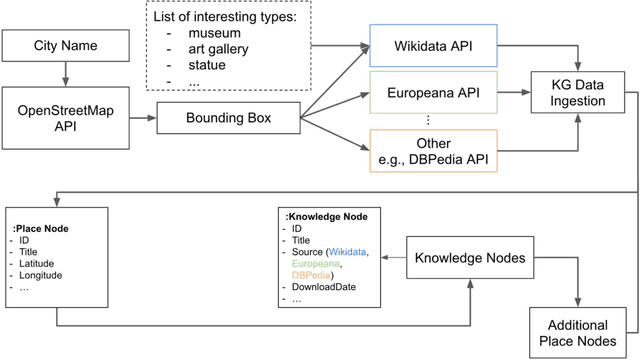

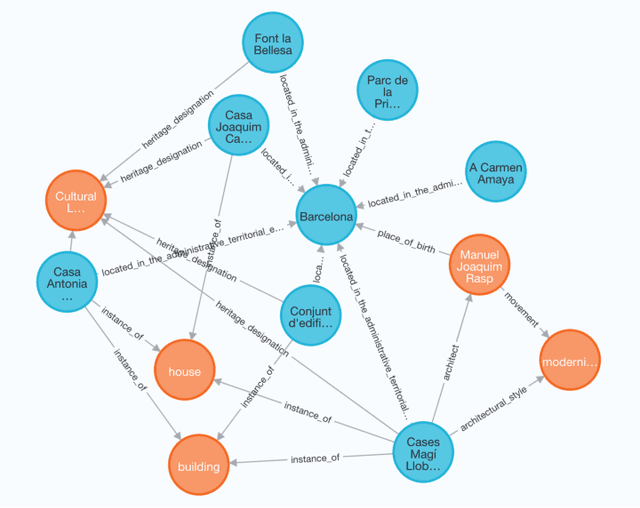
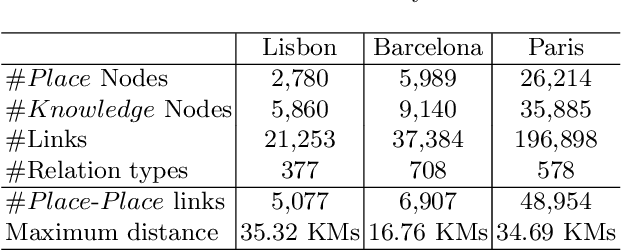
Abstract:Knowledge Graphs (KGs) have proven to be a reliable way of structuring data. They can provide a rich source of contextual information about cultural heritage collections. However, cultural heritage KGs are far from being complete. They are often missing important attributes such as geographical location, especially for sculptures and mobile or indoor entities such as paintings. In this paper, we first present a framework for ingesting knowledge about tangible cultural heritage entities from various data sources and their connected multi-hop knowledge into a geolocalized KG. Secondly, we propose a multi-view learning model for estimating the relative distance between a given pair of cultural heritage entities, based on the geographical as well as the knowledge connections of the entities.
Wild Patterns Reloaded: A Survey of Machine Learning Security against Training Data Poisoning
May 04, 2022


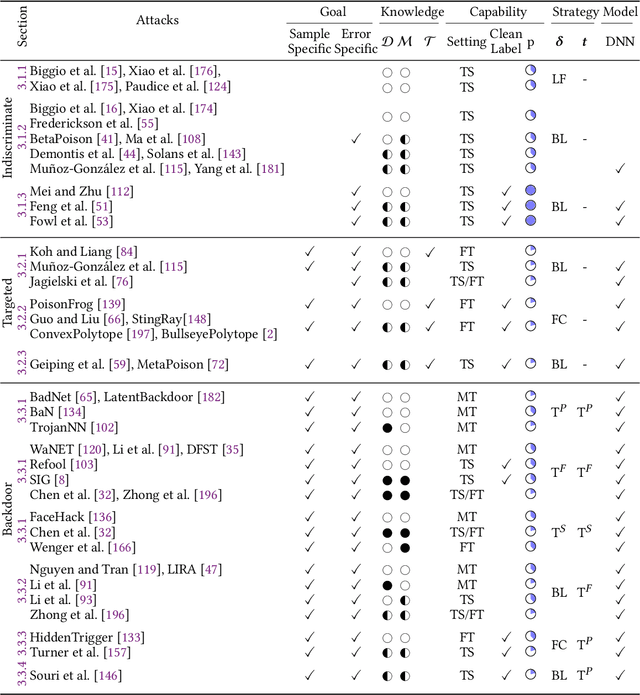
Abstract:The success of machine learning is fueled by the increasing availability of computing power and large training datasets. The training data is used to learn new models or update existing ones, assuming that it is sufficiently representative of the data that will be encountered at test time. This assumption is challenged by the threat of poisoning, an attack that manipulates the training data to compromise the model's performance at test time. Although poisoning has been acknowledged as a relevant threat in industry applications, and a variety of different attacks and defenses have been proposed so far, a complete systematization and critical review of the field is still missing. In this survey, we provide a comprehensive systematization of poisoning attacks and defenses in machine learning, reviewing more than 200 papers published in the field in the last 15 years. We start by categorizing the current threat models and attacks, and then organize existing defenses accordingly. While we focus mostly on computer-vision applications, we argue that our systematization also encompasses state-of-the-art attacks and defenses for other data modalities. Finally, we discuss existing resources for research in poisoning, and shed light on the current limitations and open research questions in this research field.
The Group Loss++: A deeper look into group loss for deep metric learning
Apr 04, 2022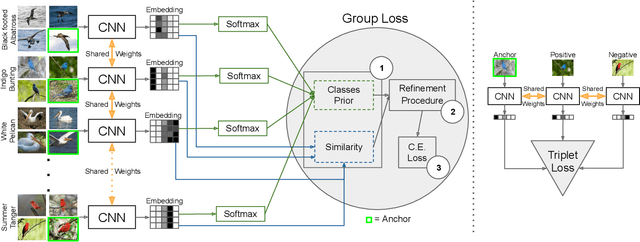
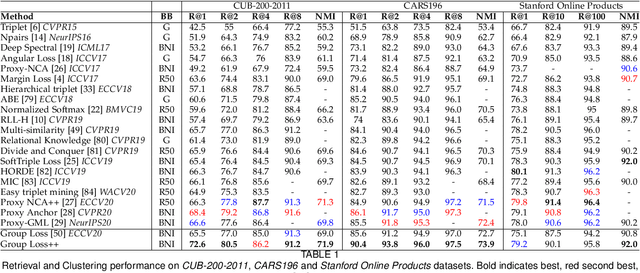
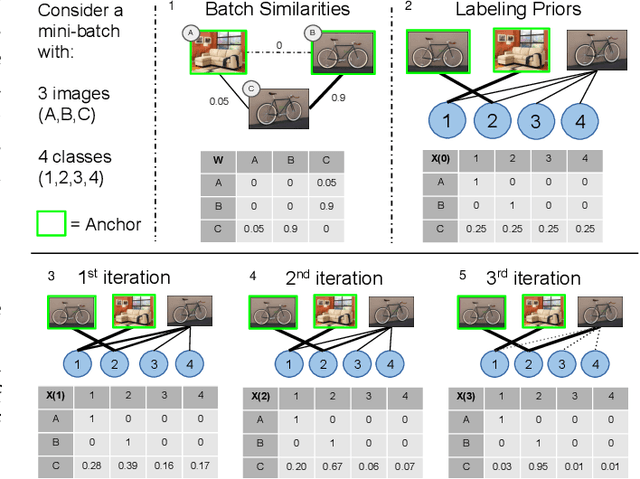
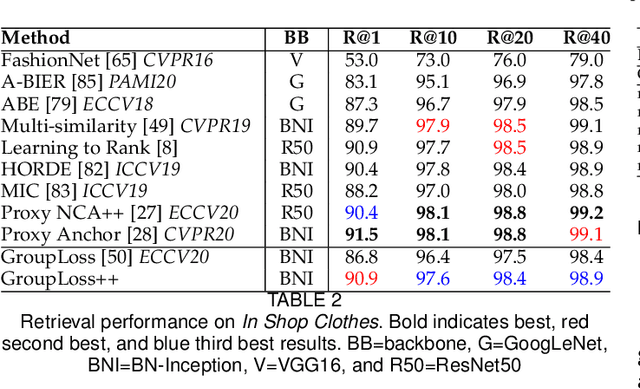
Abstract:Deep metric learning has yielded impressive results in tasks such as clustering and image retrieval by leveraging neural networks to obtain highly discriminative feature embeddings, which can be used to group samples into different classes. Much research has been devoted to the design of smart loss functions or data mining strategies for training such networks. Most methods consider only pairs or triplets of samples within a mini-batch to compute the loss function, which is commonly based on the distance between embeddings. We propose Group Loss, a loss function based on a differentiable label-propagation method that enforces embedding similarity across all samples of a group while promoting, at the same time, low-density regions amongst data points belonging to different groups. Guided by the smoothness assumption that "similar objects should belong to the same group", the proposed loss trains the neural network for a classification task, enforcing a consistent labelling amongst samples within a class. We design a set of inference strategies tailored towards our algorithm, named Group Loss++ that further improve the results of our model. We show state-of-the-art results on clustering and image retrieval on four retrieval datasets, and present competitive results on two person re-identification datasets, providing a unified framework for retrieval and re-identification.
Relaxation Labeling Meets GANs: Solving Jigsaw Puzzles with Missing Borders
Mar 28, 2022



Abstract:This paper proposes JiGAN, a GAN-based method for solving Jigsaw puzzles with eroded or missing borders. Missing borders is a common real-world situation, for example, when dealing with the reconstruction of broken artifacts or ruined frescoes. In this particular condition, the puzzle's pieces do not align perfectly due to the borders' gaps; in this situation, the patches' direct match is unfeasible due to the lack of color and line continuations. JiGAN, is a two-steps procedure that tackles this issue: first, we repair the eroded borders with a GAN-based image extension model and measure the alignment affinity between pieces; then, we solve the puzzle with the relaxation labeling algorithm to enforce consistency in pieces positioning, hence, reconstructing the puzzle. We test the method on a large dataset of small puzzles and on three commonly used benchmark datasets to demonstrate the feasibility of the proposed approach.
Backdoor Learning Curves: Explaining Backdoor Poisoning Beyond Influence Functions
Jun 14, 2021

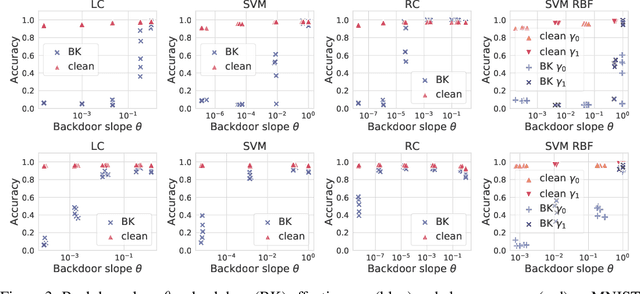
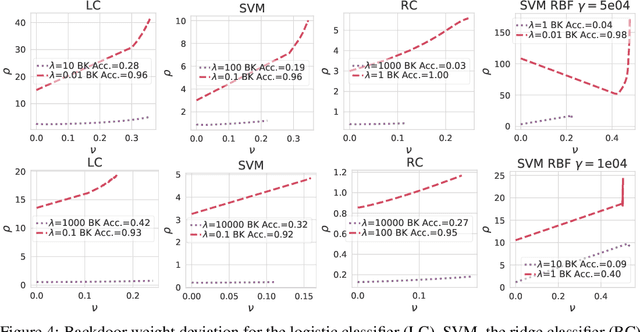
Abstract:Backdoor attacks inject poisoning samples during training, with the goal of enforcing a machine-learning model to output an attacker-chosen class when presented a specific trigger at test time. Although backdoor attacks have been demonstrated in a variety of settings and against different models, the factors affecting their success are not yet well understood. In this work, we provide a unifying framework to study the process of backdoor learning under the lens of incremental learning and influence functions. We show that the success of backdoor attacks inherently depends on (i) the complexity of the learning algorithm, controlled by its hyperparameters, and (ii) the fraction of backdoor samples injected into the training set. These factors affect how fast a machine-learning model learns to correlate the presence of a backdoor trigger with the target class. Interestingly, our analysis shows that there exists a region in the hyperparameter space in which the accuracy on clean test samples is still high while backdoor attacks become ineffective, thereby suggesting novel criteria to improve existing defenses.
 Add to Chrome
Add to Chrome Add to Firefox
Add to Firefox Add to Edge
Add to Edge